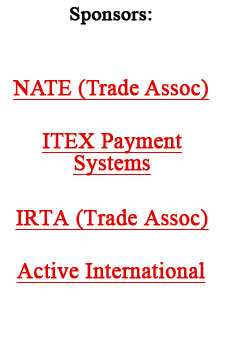|
Another Perspective on Frequent Flyer Programs
Thomas H.
Greco, Jr., the author of
Money, Understanding and Creating Alternatives to Legal Tender,
has spent more than twenty years studying money, banking and
community currency systems, throughout history.
The
following is his insightful response to last week�s
Tuesday Report, regarding the
article on frequent flyer miles (FFM).
Frequent flyer
programs are what are generically referred to as �loyalty programs.�
Their primary purpose is to stimulate customer loyalty, that is, to
keep customers coming back to make subsequent purchases rather than
going to a competitor. These programs typically provide the customer
with some sort of rebate on purchases.
These rebates
are seldom in cash, and most often are in the form of vouchers that
can be used as partial or full payment on subsequent purchases.
Ideally, a voucher credit should be acceptable in payment on a par
with cash, without restriction, but that is usually not the case. In
an effort to maximize their loyalty effect and minimize their costs,
the issuer of loyalty points, such as frequent flyer miles, will
typically impose many restrictions as to when and how vouchers may
be redeemed.
In the case of
frequent flyer programs, only a certain number of seats are made
available for frequent flyer awards on each flight, and often the
number of seats so available will be based on the number of seats
that are available as the departure date approaches.
It is my
experience that on some airlines booking must be made more than two
months in advance in order to assure an award flight. If you desire
a less restricted reservation, at least one airline, Delta, is
increasing the number of miles required for an award flight. The
normal number of miles for a domestic flight is 25,000, but few
flights are available at this rate. If, however, you are willing o
pay 50,000 miles, you can probably get the flights you want.
Considering
the vast number of miles that the airlines have issued, it is
probably safe to bet that this kind of credit inflation will only
get worse as time goes on. The problem may be mitigated to some
degree as the airlines recruit �partner� businesses to not only
issue miles, but to redeem them, as well.
But any such
program that depends upon continual growth is a Ponzi scheme. Is
that in fact the case with frequent flyer programs? It�s hard to say
without detailed figures for each airline. The key question is, how
long would it take the airline to fully redeem its outstanding issue
of frequent flyer miles? The numbers that need to be looked at are
(1) the number of miles outstanding in relation to (2) the number of
round trip flights flown monthly or annually.
Another factor
that bodes ill for these programs is the fact that the competitive
advantage that loyalty schemes are supposed to provide disappears
when everybody starts doing it. Such was the case in years past with
supermarket stamp programs like S&H Green Stamps, Top Value Stamps,
etc.
One further
point: is it proper to refer to frequent flyer miles or loyalty
points as currency? Well, that depends on how you define currency.
While they are to some extent transferable, they are not generally
spendable. On the other hand, value can be obtained for them, but
only from a limited number of entities, and only with restrictions.
The technical and narrow definition of currency is �anything that is
commonly accepted in payment.�
On that basis,
loyalty points, including frequent flyer miles, do not qualify. I
would prefer to not muddy the waters with loose terminology, and
would urge that frequent flyer miles be categorized as loyalty
vouchers or rebate vouchers, not currencies.
For more
information on Thomas Greco, Jr., see his blog and/or web site:
www.beyondmoney.blogspot.com or
www.reinventingmoney.com.
Editor�s
note: In a recent issue
of Parade magazine an article titled �Don�t Lose Your Reward
Miles!� noted that 92% of frequent-flyer miles will never be
redeemed. The article suggests planning ahead, as FFM seats (about 8
in 100) generally become available 330 days before the flight date.
Also reported
was the declining estimated value of a mile over the last ten years,
from approximately 2-cents to 1.4-cents today. Miles usually expire
after three years on an inactive account. |





